#771 Strange Rocks on Mars July 29, 1997
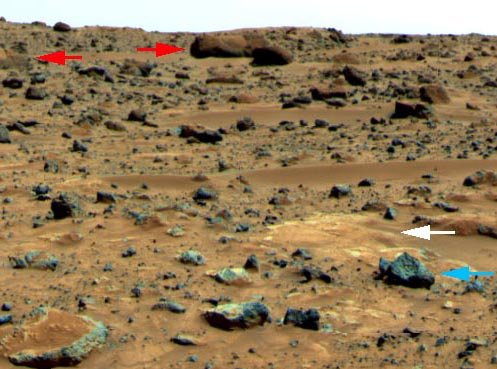
“The rocks on Mars tell us stories about their past. To decipher these stories, a scientist must become a detective, searching for clues and fitting them with theories. The above photograph of the rocky Martian surface to the northeast of Pathfinder's landing site provides many such clues. For example, at least three types of rocks are evident, marked with red, white and blue arrows. The red arrows point to smooth rocks, which Pathfinder scientists hypothesize have been eroded by tumbling through ancient channels of water which evaporated long ago. The blue arrows indicate a different type of rock, ragged ones with sharp edges, hypothesized to have been ejected when nearby craters formed or volcanoes erupted. The white areas are more mysterious, and might be some sort of composite material. Sojourner was recently diverted to study these white areas to gather more clues so continued detective work can yield better insight into the Martian past."
Copyright: Public domain
#772 Eagle Castle July 30, 1997
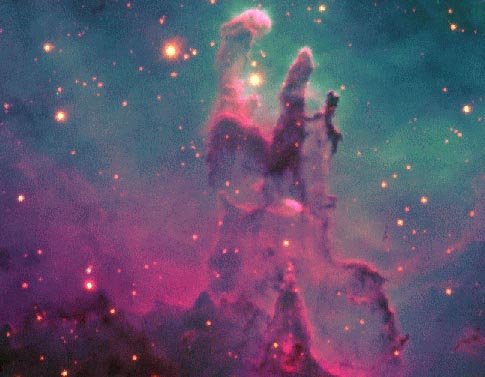
“What lights up this castle of star formation? The familiar Eagle Nebula glows much like a neon sign, but in many colors at once. The above photograph is a composite of three of these glowing gas colors. In particular the glowing red Sulfur gas of the nebula nicely outlines some of the denser star forming knots. Energetic light from young massive stars causes the gas to glow and effectively boils away part of the dust and gas from its birth pillar. Many of these stars will explode after several million years, returning most of their elements back to the nebula which formed them. This process is forming an open cluster of stars known as M16."
Copyright: Public domain
#773 Behind CL1358+62: A New Farthest Object July 31, 1997
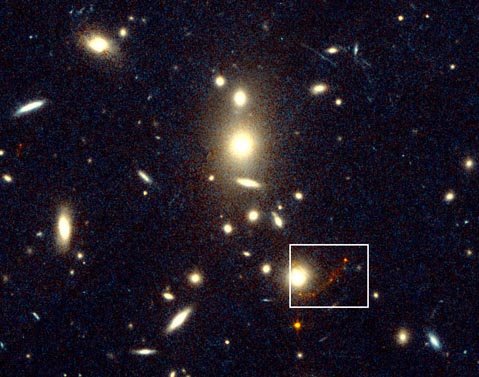
“What if we could see back to the beginning of the universe? At one tenth the universe's present age, we might see galaxies forming. But what did galaxies look like when they were forming? These questions took a step toward being answered yesterday with the release of analysis of a Hubble Space Telescope (HST) photograph of the most distant object yet discovered. Pictured in the box above, this galaxy appears to us - billions of years later and across the universe - as a faint red smudge. In technical terms, this galaxy lies at the record redshift of z=4.92. Practically all of the yellow-white objects in the photograph are galaxies in a nearby cluster which together act as a lens in amplifying the light from the ancient galaxy. A follow-up picture by the ground-based Keck Telescope actually measured the distant redshift."
Copyright: Public domain
#774 A Martian Sunset August 01, 1997
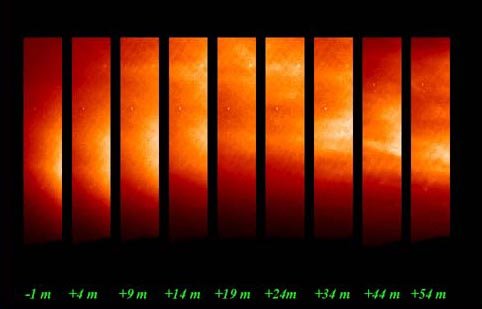
“You've had a hard day rolling past Martian rocks, so now just relax your APXS and enjoy the Martian sunset. The above pictures taken by Mars Pathfinder highlight how clouds vary during the end of a Martian day. The atmosphere on Mars is much thinner than on Earth and dominated by carbon dioxide rather than nitrogen. Clouds on Mars can be water or carbon dioxide based, depending on conditions, whereas Earth's clouds are all water based. At night the temperature at Sagan Memorial Station will dip from about -15 degrees Celsius (+4 Fahrenheit) to -77 degrees Celsius (-107 Fahrenheit). Temperatures only this cold won't bother Sojourner."
Copyright: Public domain
#775 The Cat's Eye Nebula August 02, 1997
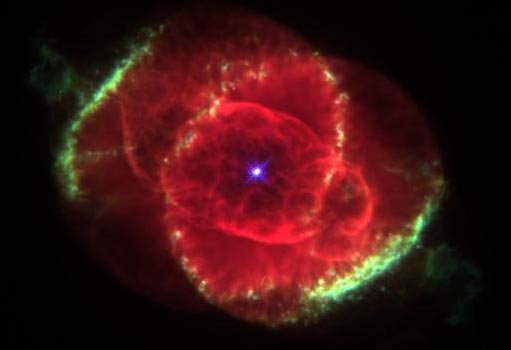
“Three thousand light years away, a dying star throws off shells of glowing gas. This image from the Hubble Space Telescope reveals "The Cat's Eye Nebula" to be one of the most complex planetary nebulae known. In fact, the features seen in this image are so complex that astronomers suspect the bright central object may actually be a binary star system. The term planetary nebula, used to describe this general class of objects, is misleading. Although these objects may appear round and planet-like in small telescopes, high resolution images reveal them to be stars surrounded by cocoons of gas blown off in the late stages of stellar evolution."
Copyright: Public domain
#776 The Cygnus Loop August 03, 1997
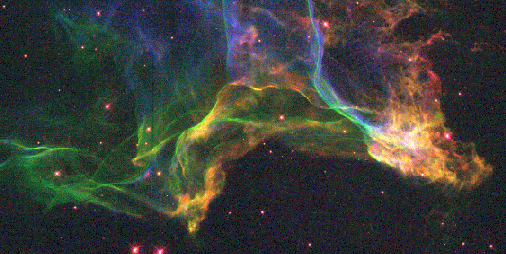
“15,000 years ago a star in the constellation of Cygnus exploded -- the shockwave from this supernova explosion is still expanding into interstellar space! The collision of this fast moving wall of gas with a stationary cloud has heated it causing it to glow in visible as well as high energy radiation, producing the nebula known as the Cygnus Loop (NGC 6960/95). The nebula is located about 2500 light years away. The colors used here indicate emission from different kinds of atoms excited by the shock; oxygen-blue, sulfur-red, and hydrogen-green. This picture was taken with the Wide Field and Planetary Camera 2 on board the Hubble Space Telescope."
Copyright: Public domain
#777 A Rusty Sunset on Mars August 04, 1997

“On Mars, sunsets can appear salmon pink. The unusual color is partly due to rust: oxidized iron from Martian dust circulating in the Martian atmosphere. Clouds appear in the morning and evening, but usually evaporate in the midday Sun. A day on Mars lasts 24.6 hours - very similar to Earth's, but a Martian year lasts almost twice as long as an Earth year. The above panorama by Mars Pathfinder, shown mirror-inverted, was released last Friday by the Imager team. Mars Pathfinder has now successfully completed all the goals of its planned mission. Nevertheless, the Sagan Memorial Station spent the weekend recharging its batteries, anticipating the possibility of still more productive weeks of exploration ahead."
Copyright: Public domain
#778 M101: The Pinwheel Galaxy August 05, 1997
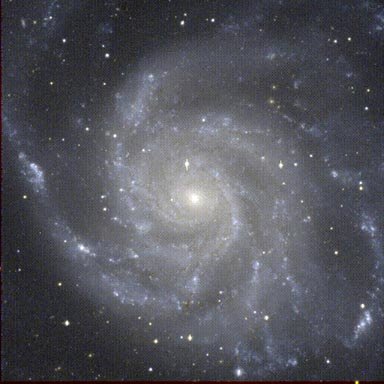
“Why do many galaxies appear as spirals? A striking example is M101, shown above, whose relatively close distance of about 22 million light years allow it to be studied in some detail. Recent evidence indicates that a close gravitational interaction with a neighboring galaxy created waves of high mass and condensed gas which continue to circle the galaxy. These waves compress existing gas and cause star formation. One result is that M101, also called the Pinwheel Galaxy, has several extremely bright star-forming regions (called HII regions) spread across its spiral arms. M101 is so large that its immense gravity distorts smaller nearby galaxies."
Copyright: Public domain
Upvote! Resteem! Comment! As you like it! Thank you for attention!
These topics are very interesting.Can you suggest any web page or books ,finding reliable more information about them.
Downvoting a post can decrease pending rewards and make it less visible. Common reasons:
Submit
Hi! I often read news here: https://www.nasa.gov/topics/starsgalaxies/ I like that here news more scientific, then not profiled media. Also I recomend books from Stephen Hawking and Brian Cox (yes everybody heard about them, but they really wonderfull) :)
Downvoting a post can decrease pending rewards and make it less visible. Common reasons:
Submit
Thanks Sir.
Downvoting a post can decrease pending rewards and make it less visible. Common reasons:
Submit